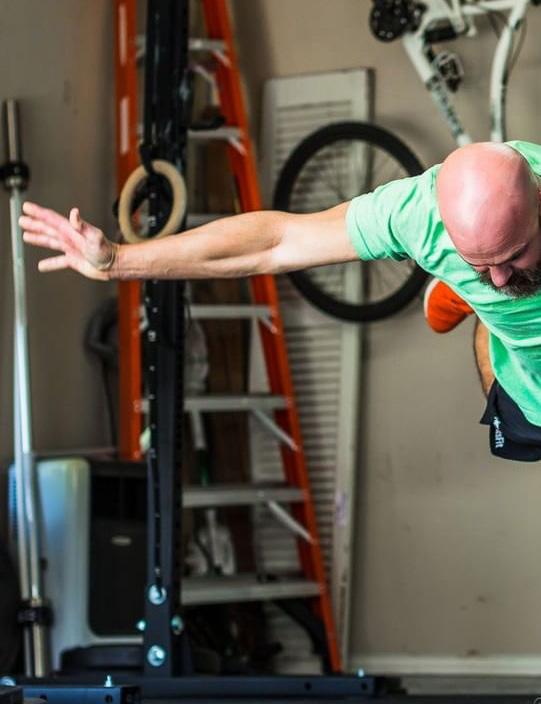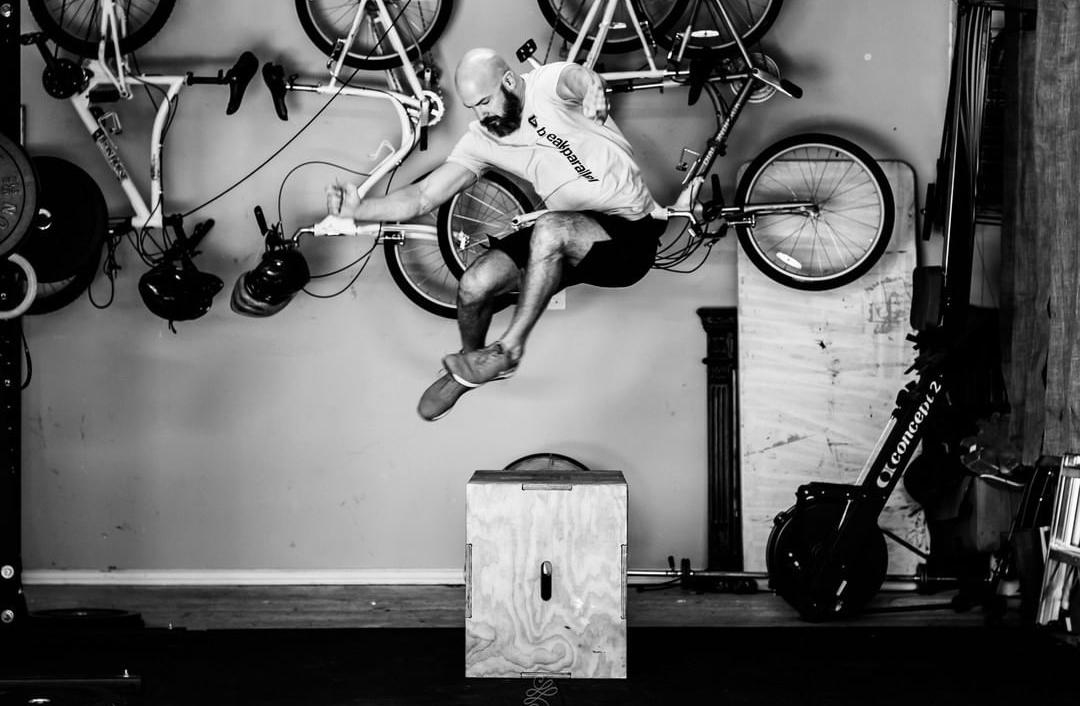
4 minute read
Should Athletes Do CrossFit?
from Fall 2019
A Case for CrossFit

photo credit: Suzy DeShields
Advertisement
David Epstein is a number one best selling author and recently published his latest book, Range: Why Generalists Triumph in a Specialized World. Within the book, David outlines why generalists, regardless of the arena— be it sports or business, fare better in what he called “wicked” domains.
The author’s point is that having a well-rounded background makes you a better fit for what is yet to come by providing you with experiences in a myriad of situations and domains.
This idea is far from novel, as it is one of the major tenets of CrossFit™.
The CrossFit Level 1 Training manual provides a simple but eloquent way of stating it, “You will fail at the margin of your experiences.” We believe that a general fitness program should encompass cardiorespiratory endurance, stamina, strength, flexibility, power, speed, coordination, agility, balance and accuracy, in equal measures, and is the best foundation for general physical preparedness. Further, an increase in an athlete’s general fitness can only enhance their performance in their specialized sport.
I daresay that the above comments would be read as heresy and met with arguments to the contrary from a majority of strength and conditioning professionals. The arguments I hear most voiced, are:
• CrossFit™ programming is too general and its broad • CrossFit™’s application to certain populations is ineffective at best, and dangerous at worst • The use of the clock leads to inappropriate intensity levels • The group mentality is dangerous • Olympic weightlifting and plyometric methods are applied incorrectly • The kipping pull-up is an abomination that leads to nothing but shoulder issues. Sound about right?
The issues mentioned above have led to casual remarks about the negative side-effects from a wide range of trainers and coaches outside of CrossFit™ stating it’s inappropriate for “real” athletes. Well, I have a few thoughts.
First, would you consider the men and women who compete at the CrossFit™ Games true athletes? If so, then a clarification needs to be made about which athletes, or better yet, athletes who participate in which sport, even recreationally, should refrain and during what part of the season?
Next, a concise argument about which particular portion of the season for the athlete should be avoided. Are we talking, in-season, offseason, or pre-season?
Most traditional sports that have seasons, and during the in-season periods, I fully understand the time demands placed on athletes and the need to focus on sport-specific needs, practices, and games.
However, once the season is over, a post-season rest period followed by off-season training focusing on general fitness and that judiciously addresses the imbalances created by the demands of the sport is the perfect time for using the methodology to help injury prevention by strengthening or mobilizing the weak or tight areas created during the season.
What about non-traditional sports / athletes that do not have annual seasons such as combat sports or tactical athletes? Should we lump them into the “it’s dangerous to CrossFit™” category of athletes.
I would argue that getting punched in the face, fighting fires, or special operations deployments have a higher propensity for injury rates than CrossFit™. Further, the nature of the general physical preparedness is precisely what’s required of these athletes who don’t know if their “sport” will require a single five-minute MMA round or a multi-day wild-land firefight on unsteady terrain with steep changes in elevation.
At its core, CrossFit™ is a cross-training methodology, when appropriately constructed uses concurrent training methods and the application of nonlinear progression (NLP). These are properties of variance, which is a pillar of the program. Notice I said variance, not random.
I believe this is where the majority of folks misunderstand the methodology. This is because it’s hard to see the structure and purposefulness when workouts are only seen in isolation.
But, when a metaphorical ten-thousand-foot view is applied, the nuances of the program can become evident. A dance of pushing and pulling, heavy and lite, slow lifts, and dynamic ones all help to create a fitness program that is more focused on the whole rather than the parts. Our specialty is not specializing.
Now, let us go back to arguments from above and remove them, so no clock, no box jumps, no kipping pull-ups, workouts are one-on-one with a trainer that doesn’t want to use Olympic lifting, and crafted the workout programing for that specific person’s needs and skill-set.
Further, that trainer diligently applies the constructs of mechanics, consistency and then, and only then, intensity, what do you get? CrossFit™, that’s what you get. You can still consistently vary functional movements at high intensity regardless of what you remove from the program.
I think ultimately, the real arguments most trainers and coaches, whether they want to admit or not, is two-fold but rooted in the same place.
First, the requirements to obtain a CrossFit Level 1 certificate has a low barrier. You can earn your CFL1 over a weekend learning a wide breadth and low depth of information, pass your test and pay your registration fee (at the moment, $1,000).
Second, because they believe the best program of fitness or sport is an approach that is tailored to the individual and their training age, injury history, imbalances, flexibility, schedule.
Merge those arguments, and you get a perception that CrossFit™ coaches as imposters in the fitness arena who are taking clients away with the lure of a get fit quick scheme. Sprinkle in the fact that CrossFit™ regularly utilizes higher-level skills that not everyone is comfortable teaching, and you have a recipe to say, “real athletes shouldn’t do CrossFit.”
So, now begs the question; Is CrossFit right for you? If you want to build a robust fitness level that helps build resilience to much of what life will throw at you and use your general fitness as scaffolding to elevate your specialized sporting needs, then find a qualified coach and start the journey.

photo credit: Suzy DeShields


